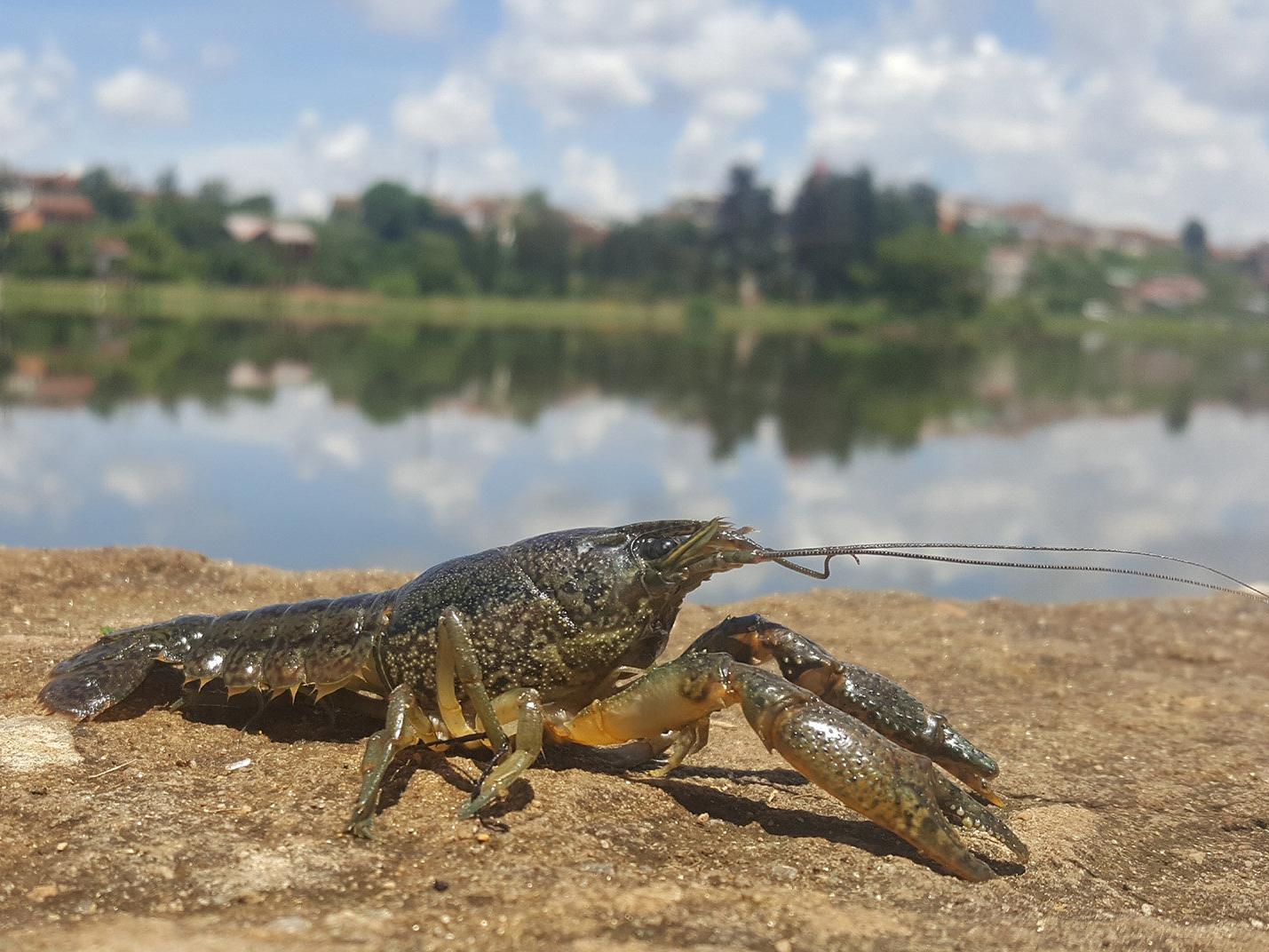All-female mutant crayfish that clone themselves are taking over rivers and lakes around world
Invasive crustaceans reproduce without mating, and have spread from Germany to countries as diverse as Madagascar and Japan

Your support helps us to tell the story
From reproductive rights to climate change to Big Tech, The Independent is on the ground when the story is developing. Whether it's investigating the financials of Elon Musk's pro-Trump PAC or producing our latest documentary, 'The A Word', which shines a light on the American women fighting for reproductive rights, we know how important it is to parse out the facts from the messaging.
At such a critical moment in US history, we need reporters on the ground. Your donation allows us to keep sending journalists to speak to both sides of the story.
The Independent is trusted by Americans across the entire political spectrum. And unlike many other quality news outlets, we choose not to lock Americans out of our reporting and analysis with paywalls. We believe quality journalism should be available to everyone, paid for by those who can afford it.
Your support makes all the difference.A crayfish species that came into existence less than 25 years ago has spread around the world by cloning itself.
The entire global population of marbled crayfish has been traced to a single female held in a German aquarium, which was born with the ability to reproduce without having its eggs fertilised by males.
Every marbled crayfish is female, and every egg laid is an exact clone of its mother.
The ability to reproduce quickly and with such ease made the crustaceans popular in the aquarium trade, but when they found their way into the wild the crayfish got out of control.
“It was known that the crayfish can establish itself in the wild after releases from the aquarium,” said Dr Frank Lyko, a researcher at the German Cancer Research Centre who has sequenced the genome of the marbled crayfish to understand its abilities. “But the news was that it can spread so rapidly and massively.”
While the rapid reproduction rates of the crayfish at first made them an appealing prospect as pets, it has also led to many of them being dumped in the wild.
The first known marbled crayfish appeared in 1995. Since then, they have spread into the wild and established populations in freshwater ecosystems around the world, in countries as diverse as Ukraine, Japan and Madagascar.
Scientists studying this invasive animal have raised the alarm about its likely impact on local wildlife, ecosystems and agriculture as it spreads in to new regions.
Successful non-native species like the marbled crayfish often cause trouble when they arrive in new environments, as they can feed on local wildlife or compete with it for resources.
One study documenting the crayfish’s spread across the Czech Republic described it as the “potentially most dangerous non-indigenous crayfish species spreading in European countries and elsewhere”.
Genetic analysis by a Dr Lyko and his team has confirmed the first marbled crayfish, which split from a species called the slough crayfish found in the Florida Everglades, arose due to a mutation in its parents’ sex cells that bestowed it with the power of virgin birth.
Their work also provided proof that the all-female offspring of the crayfish are genetically identical, barring a few natural mutations.
“We could detect only a few hundred variants in a genome that is larger than the human genome. That is an incredibly small number,” said Dr Lyko.
Their research was published in the journal Nature Ecology and Evolution.
Dr Lyko had another motive for understanding the genome of this crayfish, as he said it was “an animal that reproduces clonally and therefore represents a model of a central aspect in tumour development”.
“Tumour genomes also evolve clonally, because they go back to a single original cell,” he said.
However, both crayfish and tumours are still capable of adapting to their environments through a process termed “clonal evolution”, and in both cases this is a bad thing.
In crayfish, their ability to adapt means they can spread to a variety of different habitats and climates, and in tumours this means they can develop resistance against cancer-targeting drugs.
The traditional view of evolution holds that adaptation is aided by sex, because when two animals reproduce, their genomes are mixed up into new combinations in their offspring, allowing for adaptation to adverse conditions.
But the crayfish are able to adapt via epigenetic mechanisms – chemical changes that affect DNA, but are independent of a creature’s genes. This is what allows the clones to inhabit such diverse environments, despite all sharing the same basic genetic code.
Join our commenting forum
Join thought-provoking conversations, follow other Independent readers and see their replies
Comments